
After figuring out my compromise grid, I decided I wanted a notebook with this paper in it. I couldn’t find any printing services that could do what I wanted at a small scale, so I started wondering about making my own notebook. After getting scared away from involved traditional bookbinding methods, I stumbled across “disc binding” — bingo!
A brief history of disc binding
A Belgian company, Atoma, came up with disc binding and has been quietly making school notebooks for Belgian schoolchildren for decades. Instead of rings or spirals that go through a hole in the paper, disc binding uses discs with a raised edge. Paper is punched with a series of a mushroom shape, that allows it to mate with the discs. Appropriately punched paper can be removed and re-inserted easily onto the discs.
Atoma makes a wide arrange of gorgeous disc-based notebooks, including metal discs, that are inexpensive and widely available in Belgium. This would be great news if I still lived in the Netherlands, but unfortunately Atoma products are harder to source outside that particular corner of Europe. Luckily, Atoma did not zealously protect its intellectual property. Several companies have borrowed the idea and made it more widely available, including Levenger and Staples. Better yet, all the disc binding systems are roughly compatible.
Staples M Arc
One trip to Staples later, I was the proud owner of a Junior size “M by Staples Arc” notebook (their disc binding brand). Because I wanted to use my own paper design, I also had to pick up their disc binding punch. Disc binding works best with a thicker weight paper, so I also picked up some heavier weight printer paper. It was, all in all, a rather expensive notebook, but as it should continue to serve me indefinitely, the initial cost should amortize.
“Building” the Notebook
Nothing left to do but make the darn thing. I modified the design slightly from my previous post, opting for uniform black dots, and making the lines go landscape rather than portrait. If you want it, you can download the file I used.
I printed these pages
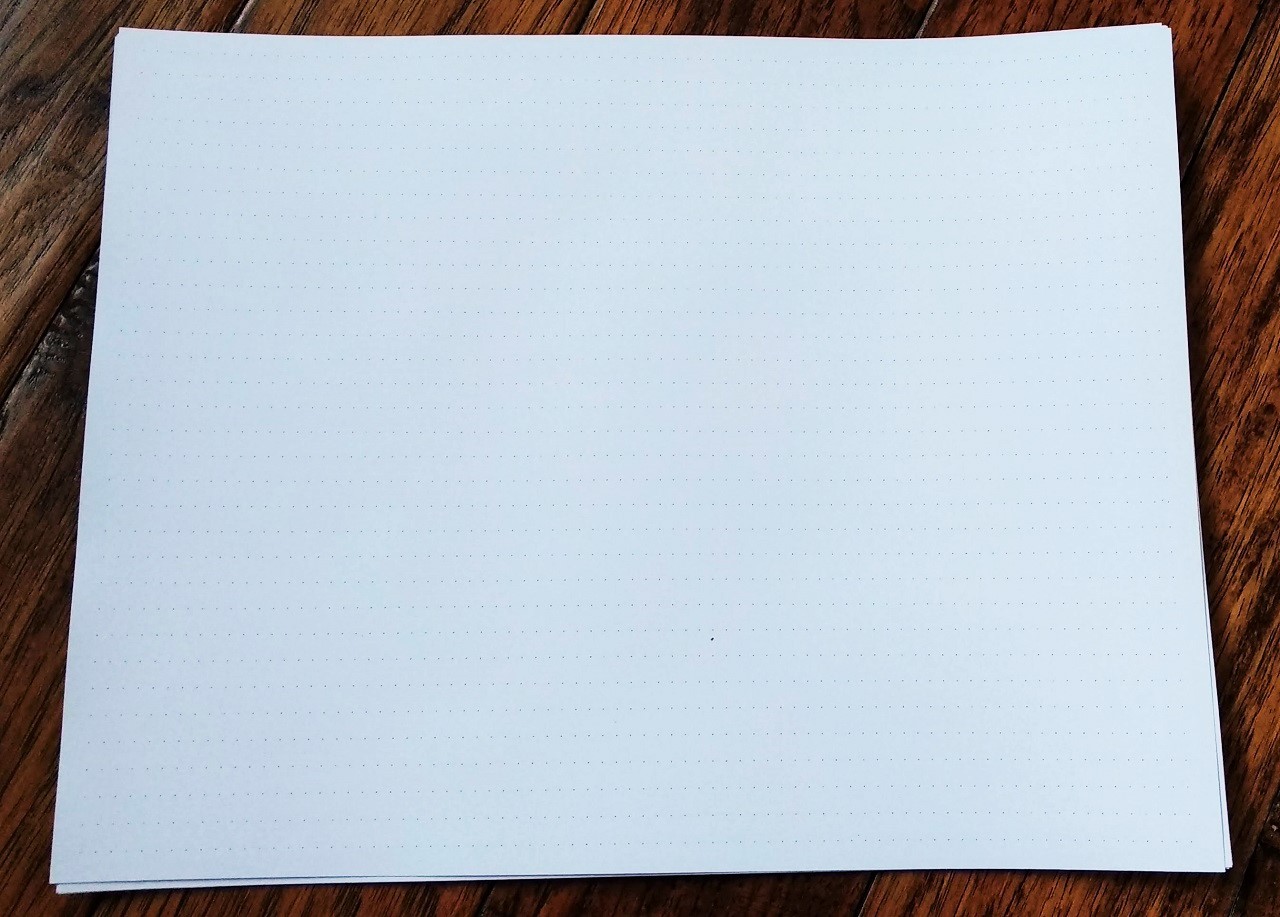
then I sliced them
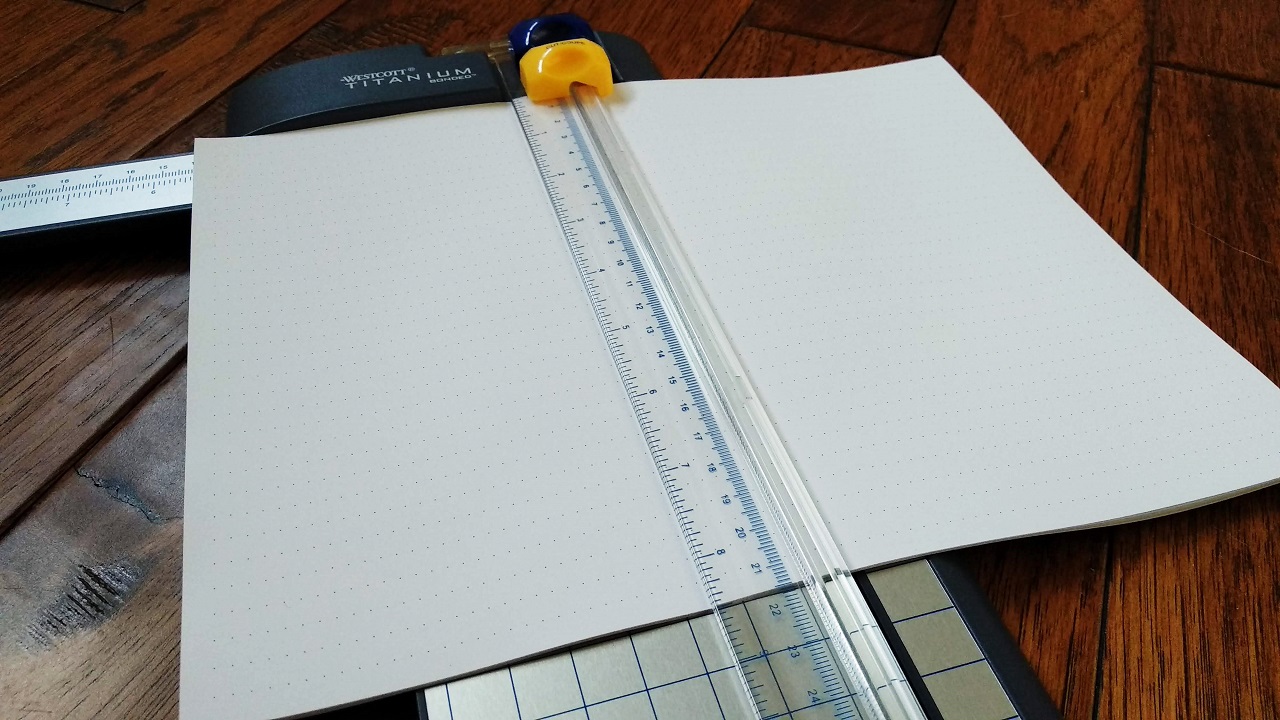
punched them
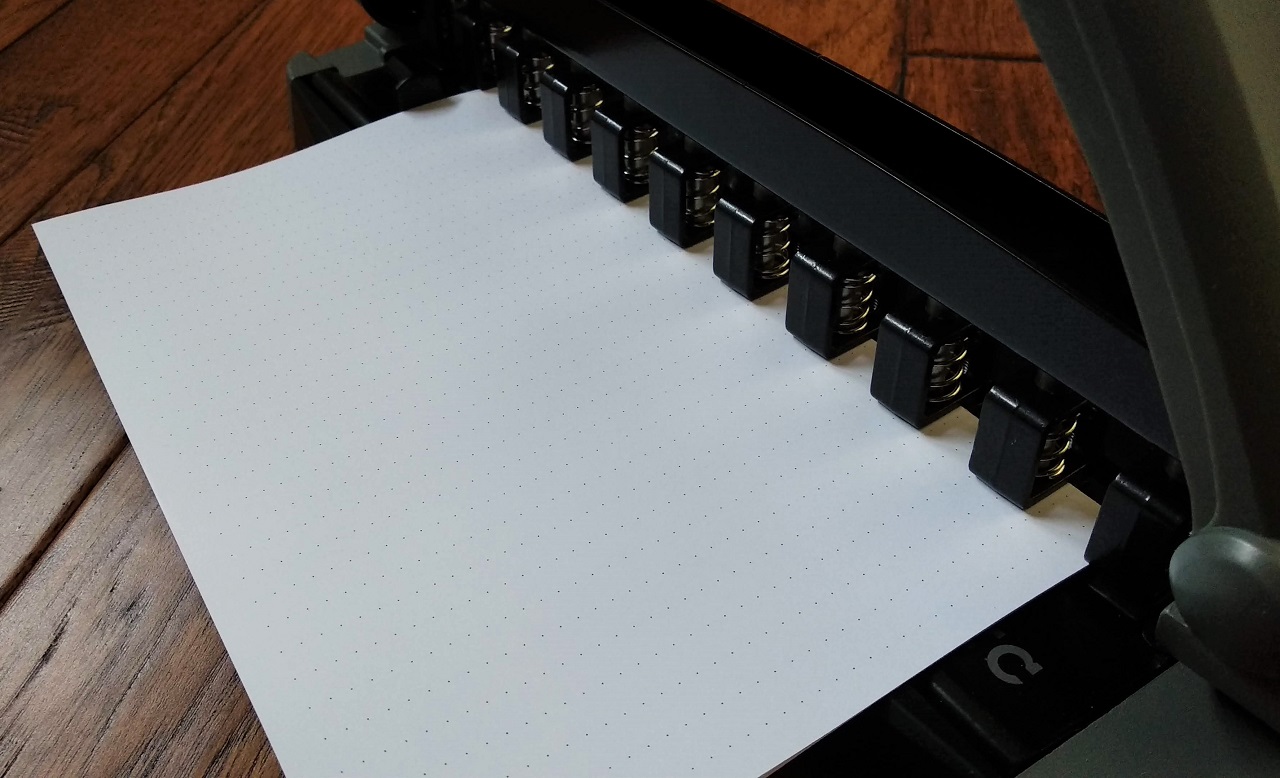
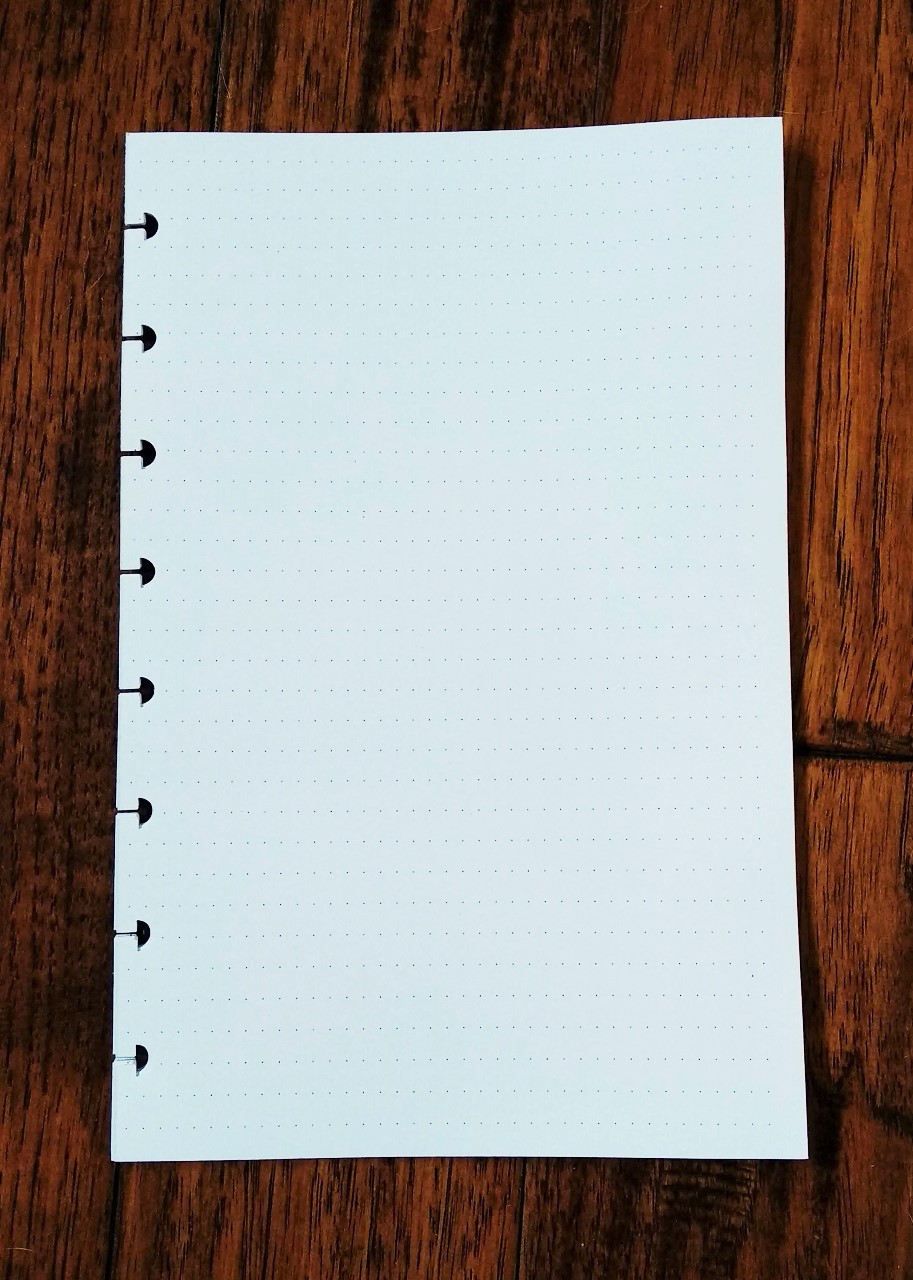
put them in the notebook
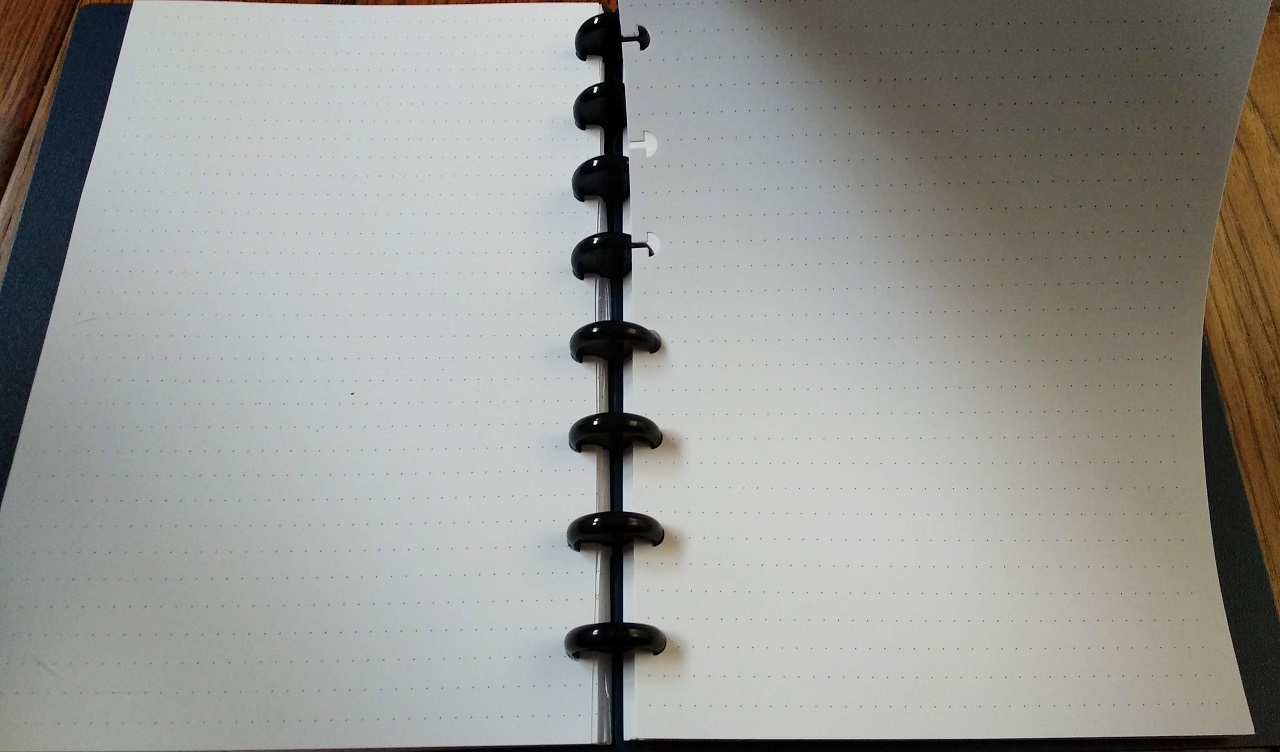
And, lastly, used them.
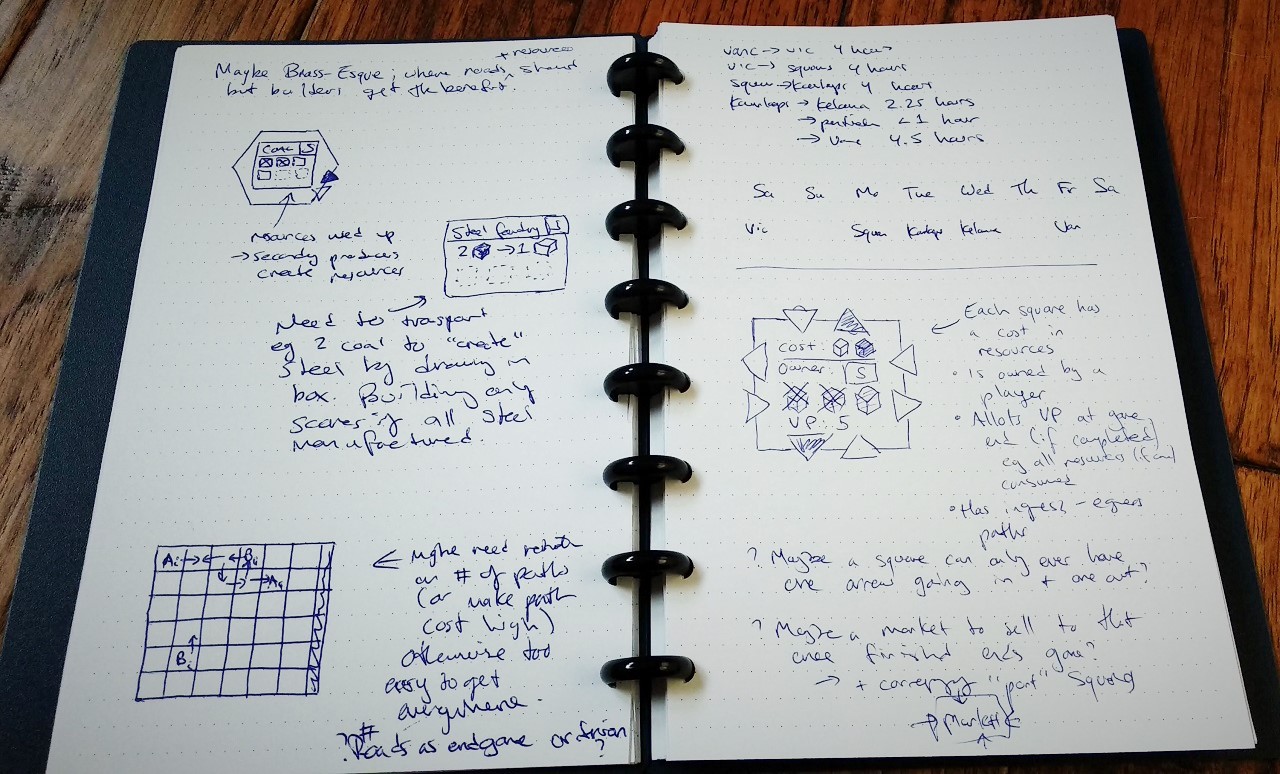
Parting thoughts
I was worried launching into this that I might put in all the effort and not be happy with the result. I have been using this notebook (and my paper) for a couple months and it works great. The notebook is a good size and a delight to use, and the dot grid I’ve printed works well for prose, drawing, and design. The heavyweight printer paper feels luxurious to write on, as though I’m getting away with something slightly naughty.
A bonus of the disc style binding is that I never need to buy a new notebook. As I fill this one, I can archive older pages to some spare discs and add new paper to this one. If I get tired of the plastic cover it came with, I can manufacture a new one. If a ring should break, I can replace it. It is the Notebook of Theseus.
tags: stationery custom notebook disc power graph paper dot paper square grid isometric hexes boardgame design